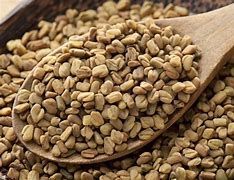Fenugreek
KEY INFORMATION
Height: to 60cm
Spread: to 25cm
Hardy annual
Sun or semi-shade
Germination: 7 - 10 days
Harvest: From 5 weeks
VARIETIES AVAILABLE FROM COLLIE FLOWERS
SOWING & GROWING SCHEDULE
Sow Undercover: October to March
Sow Outdoors: April to May
Plant Out: n/a
Harvest: all year round

Growing Guide
Fengreek is also known as Methi, which is how many of us will have seen it on the menus of our favourite Indian takeaways. With its spicy, peppery aroma and a sweet and sour taste fenugreek has a distinctive flavour that is delicious in all sorts of dishes, the seeds are also used as a spice for cooking with. Fenugreek blends amazingly with cumin and coriander.
Sow seed indoors October to March 1cm deep in good free-draining, seed compost. Cover with a fine sprinkling of vermiculite. Place in a propagator or seal container inside a polythene bag until after germination. Keep compost on the dry side at all times, water lightly as seedlings emerge. Fenugreek should be sown in it’s final position as does not transplant well, a 9cm plant pot or shallow container is suitable. Alternatively direct sow your Fenugreek seeds outdoors in April or May.
Once established, thin seedlings to 5cm apart. Water your crop regularly to keep it moist, particularly in dry weather. Pinch off the top third of mature stems periodically to encourage lush, branching growth. This fast-growing annual will produce leaves that are ready to harvest within just 20-30 days of sowing. Trim the leaves carefully, snipping the top third of mature stems, and allowing the rest to continue growing. This also encourages branching, which will increase flowering and seed production later on. If you’re not planning to collect the seeds, regular harvesting also delays it from setting seed.
TOP TIPS
Fenugreek works as a great green manure. Like legumes, their roots fix nitrogen into soils making it an excellent cover crop for beds left bare for a few months. Intercropping with fenugreek makes nitrogen available to other crops as well as smothering competing weeds.
